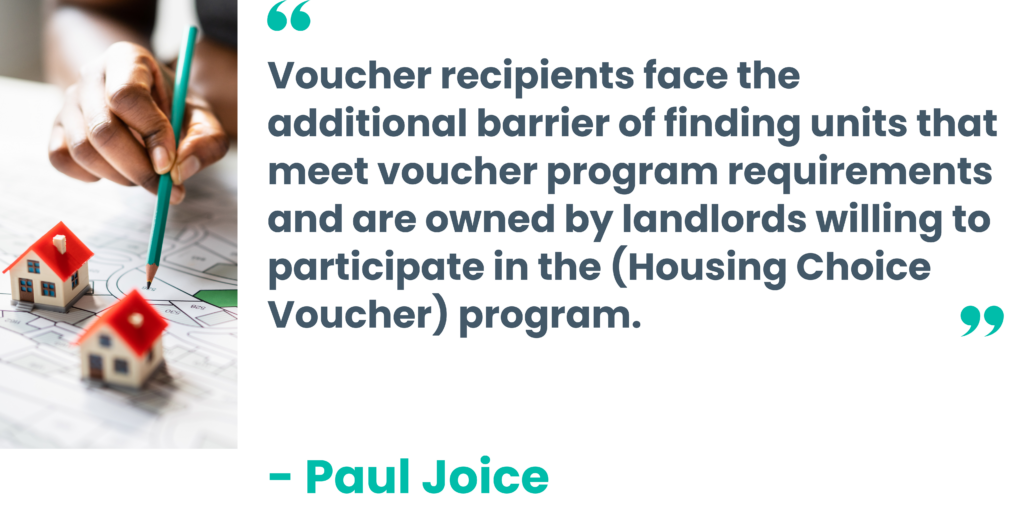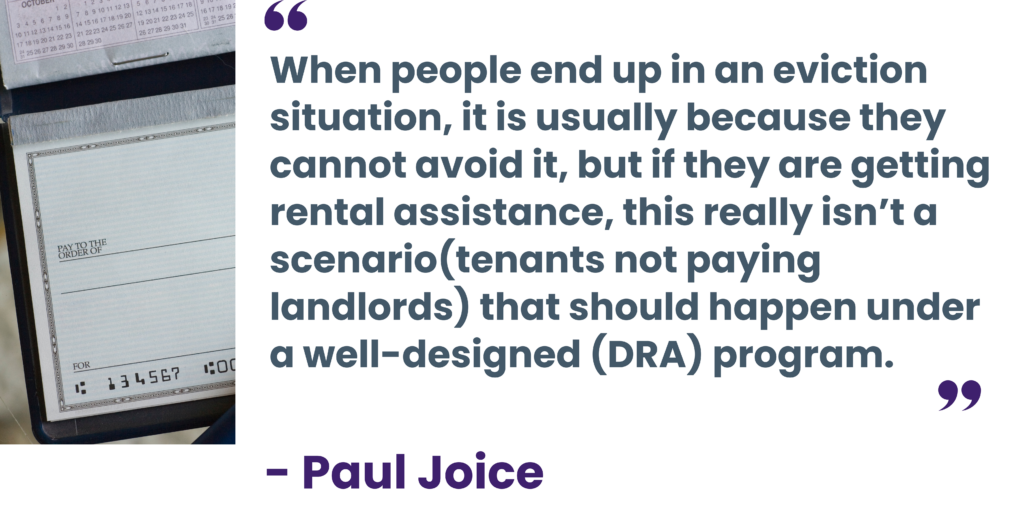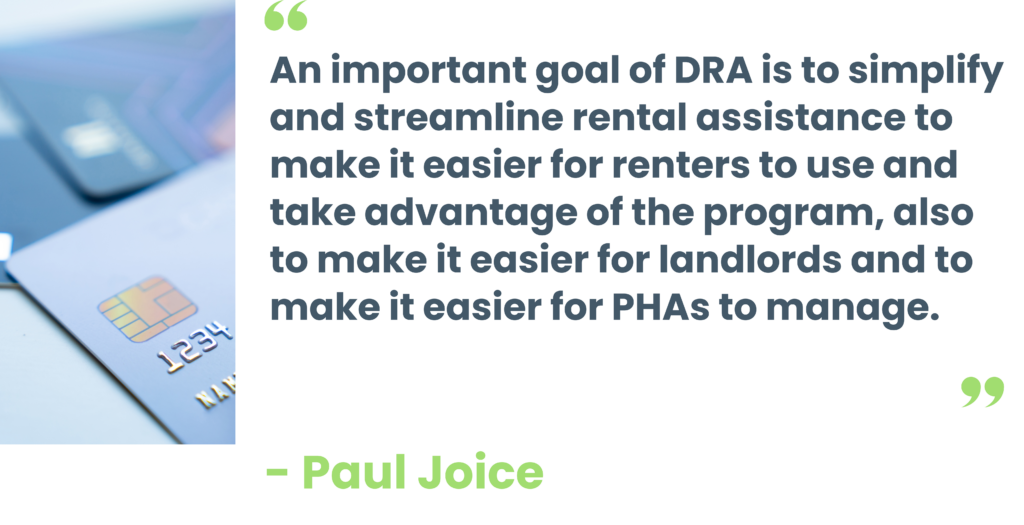
October 10 marked another BRHP In Conversation, this time with U.S. Department of Housing and Urban Development (HUD) Social Science Research Analyst Paul Joice joining BRHP Executive Director Adria Crutchfield to discuss Direct Rental Assistance (DRA) and the ways this innovative model for housing assistance could benefit recipients and landlords, as well as provide a deeper understanding of its origins and differentiation from similar cash assistance pilot programs of the past and present.
Paul Joice’s work involves researching ways to better address the needs of low-income families across the county, and his research has been published in Cityscape, the journal published by the HUD office of Policy Development and Research. Joice led the audience through a primer on Direct Rental Assistance, answering the questions below.
What is Direct Rental Assistance?
While Direct Rental Assistance can come in many forms and models, in general it is the direct payment of rental assistance to the tenant, rather than to the landlord, modeling the traditional landlord-tenant payment relationship in the free market. Not a standard or universally available assistance model currently, DRA is an experimental concept that is in the process of being tested as a way to provide rental assistance while empowering tenants and removing administrative barriers inherent to current programs.

What are the origins of the Direct Rental Assistance model?
Direct Rental Assistance has its origins in the 1970s when HUD tested the Experimental Housing Allowance Program (EHAP). EHAP aimed to test various models of housing assistance including direct payments to tenants.
Before fully testing different models, HUD settled on the Section 8 Voucher program as their primary funding model for rental assistance, which remains in effect today as the
modern-day Housing Choice Voucher (HCV) program. Just this year, HUD and Public Housing Authorities (PHAs) celebrated the 50th anniversary of the HCV program, which has been widely acknowledged as an effective program for reducing rent burden, overcrowding, homelessness, and housing instability.
In what ways is Direct Rental Assistance like the Housing Choice Voucher Program?
The Housing Choice Voucher program and Direct Rental Assistance are like close relatives to each other, both aimed at providing assistance to low-income families searching for or retaining housing. What makes the two programs different is that, unlike the HCV program, a participant receiving assistance through DRA would receive the housing assistance payment directly to pay their landlord or property management, removing the PHA or voucher administrator from the relationship between the tenant and landlord. Currently, PHAs send payments to landlords according to a Housing Assistance Payment Contract.

What are the potential benefits of Direct Rental Assistance for landlords or prospective tenants?
As Joice notes, “Voucher recipients face the additional barrier of finding units that meet voucher program requirements and are owned by landlords willing to participate in the program.”
DRA has the potential to open the door for tenants who might have otherwise not been able to successfully use a voucher before it expires. Nearly 40% of current HCV recipients fail to successfully use their vouchers with issues of discrimination, limited landlord participation, and limited housing stock being the most common challenges that these tenants face. Direct Rental Assistance can give families more flexibility in choosing where to live by negating some of the common issues above, potentially reducing segregation and allowing access to better neighborhood schools.
Landlords could benefit from DRA through reduced administrative burdens to participate, saving time and additional resources, as well as opening a larger pool of potential tenants, including those who might not have traditional income sources but still need housing.

Would receiving cash assistance through Direct Rental Assistance be considered income, meaning would it impact any other government assistance one may have?
The IRS determined that Emergency Rental Assistance (ERA) payments to eligible households during the pandemic should not be considered income. Joice advises that collaboration between providers and including a housing requirement—requiring that DRA be used for housing, requiring the recipient to provide a lease, and setting the subsidy not to exceed the recipient’s rent—should ensure that DRA is considered housing assistance rather than general income.
When could we expect Direct Rental Assistance to be implemented on a greater scale?
Although not completely new, Direct Rental Assistance is under consideration for piloting in many housing programs around the country. From these pilots, evaluators would summarize outcomes and lessons learned to share with HUD for further consideration of DRA on a larger scale.
Currently, Direct Rental Assistance is not a provided form of assistance in the BRHP Housing Mobility Program, though a pilot program sometime in the future is being considered.
Want to catch the full conversation? Take a moment to watch the full replay on our YouTube channel!
Still curious?
Read more of Paul Joice’s research with HUD’s Cityscape here: Direct Rental Assistance: Returning to the Roots of Housing Allowances
Also check out our previous In Conversation with Dr. Kathryn Anne Edwards, detailing the importance of affordable and quality childcare for families in the United States: BRHP In Conversation: Dr. Kathryn Anne Edwards on the Childcare Crisis
*Views expressed during the BRHP In Conversation are those of the speakers and not necessarily U.S. Department of Housing and Urban Development official policies or positions.
Written by — Phillip Clark, Communications Associate